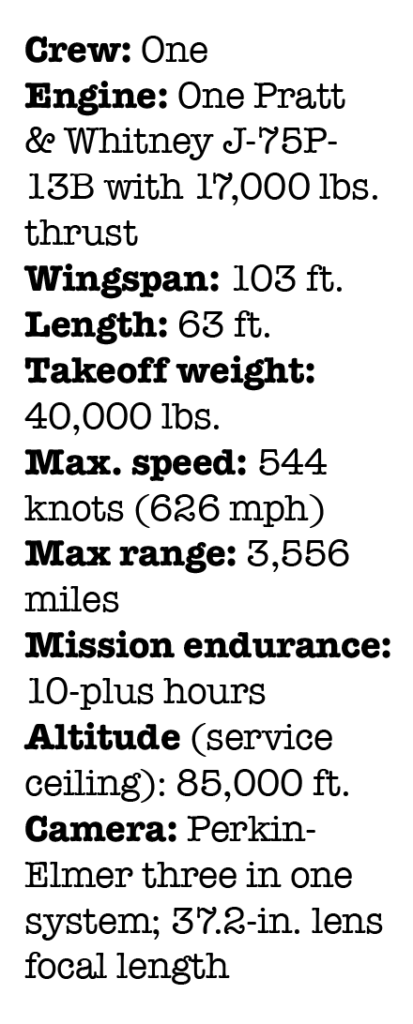
Beginning Aug. 4, 1959, the CIA conducted a series of U-2 missions over North Vietnam that provided the first confirmed evidence of the communist country’s airfield construction and other military activities. In the era preceding satellite imagery, the U-2, nicknamed the “Dragon Lady,” was America’s only reliable way to produce concrete views of developments in nonaccessible regions.
The Air Force rejected Lockheed Corp.’s initial design, the CL-282, in 1953, but President Dwight D. Eisenhower decided to purchase the plane for the CIA to collect photographic evidence of Soviet nuclear weapons and bomber production. Lockheed’s pioneering engineer Clarence E. Johnson led the design team, designating the plane a utility aircraft (general-purpose transport plane) to maintain secrecy. The prototype first flew on Aug. 1, 1955.
Everything but the engine was unique. The plane had a specially designed radar altimeter and used fuel with a low-freeze and high flash point. Its “bicycle” landing gear placed the forward wheels just aft of the cockpit’s position and the rear wheels forward of the engine exhaust. Auxiliary wheels called “pogos” descended below the wings while on the ground. Early models had a three-camera system with a 24-inch focal length. Resolution was 24 inches from 60,000 feet.
Essentially a powered glider, the U-2 proved difficult to fly at mission altitudes (above 65,000 feet). Pilots flew their entire mission just 8 knots (9 mph) above stall speed until more powerful J-75 engines were introduced in 1959. To prevent decompression sickness, pilots ate a special pre- and post-mission diet, wore specially tailored pressure suits and breathed 100 percent pure oxygen during missions.
Although no U-2s flew over North Vietnam after 1966, their superior imagery resolution provided critical intelligence and mapping support. Many variants have been built over the years, including two models for aircraft carriers. Originally designed for aerial photography missions, the aircraft, in its latest iteration, the U-2R, can carry a variety of electronic equipment, infrared sensors, side-looking radar and electro-optical sensors, ensuring the Dragon Lady’s continued service into the 2030s.
This article appeared in the October 2020 issue of Vietnam magazine.






